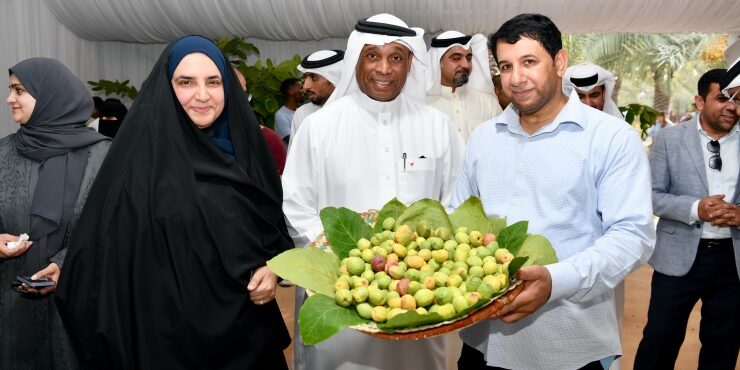
THE first-ever Almond Festival in Bahrain is set to kick off next week, highlighting the agricultural and cultural value of the popular tree and nut, and sowing the seeds for a larger industry on the island.
The Almond Festival will take place on July 8 and 15 at the Budaiya Botanical Garden, at the same location as the annual farmers market, and is being organised by the Municipalities Affairs and Agriculture Ministry.
“The ministry, in partnership with the supporting agencies, led by the National Initiative for the Agricultural Development (NIAD) and the Bahrain Agricultural Co-operative Society, is keen to excel in this national event by building on the successes achieved in previous years in the farmers market and making this festival an additional platform for marketing local agricultural products,” said the ministry’s agriculture and marine resources under-secretary Dr Khalid Ahmed Hassan in a statement yesterday.
Fifteen farmers and three productive families will participate in the event, during which four varieties of almonds will be showcased.
Activities planned for the two Saturdays include displaying the seedlings, and highlighting methods of cultivation.
“In addition to presenting the manufacturing industries of almonds, and providing information and guiding publications on almond varieties, methods of cultivation and harmful pests, we will be conducting activities for children related to the almond tree as a local symbol of our heritage,” Dr Hassan added.
“In addition, we will be planting 1,000 almond seedlings on the sidelines of the festival, at cultivation sites that are yet to be determined.”
The almond is both a species of a tree native to the Levant and the nearby region, as well as the name of its edible and widely cultivated seed.
Hot and dry summers with plenty of sunshine and water, and cool frost-free winters are the ideal environment for most varieties of almonds.
The tree can grow up to 35 metres tall, with an upright, symmetrical crown and horizontal branches.
It produces a green fruit, which ripens to yellow and red, containing a single seed. In addition, the leaves and bark have been used in herbal medicines to treat a variety of ailments, from dysentery and diarrhoea to liver disease.
“The first festival is a platform to support Bahraini farmers in marketing their products and finding areas where innovation and economic opportunities are available,” said Dr Hassan.
“We need to pay attention to this Bahraini fruit and preserve it as one of our genetic resources.”
The festival builds on the success of the Bahrain Farmers Market, which was held last year under the theme, ‘Our Harvest is Bahraini’.
The GDN had previously reported that the 10th edition of the market, which closed before Ramadan, attracted 250,000 visitors.
As many as 32 farmers, four agricultural companies, five nurseries, four apiaries and four activities specialised in dates took part in this edition, in addition to 20 productive families, in co-ordination with the Social Development Ministry.
